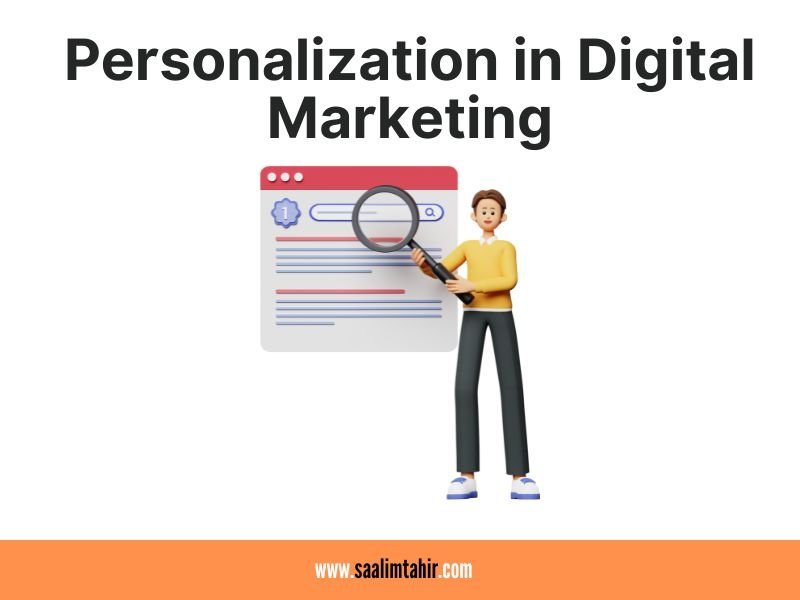Understanding Personalization in Digital Marketing: Strategies for Implementation
Personalization in digital marketing is no longer a mere buzzword or a novelty; it has evolved into an integral element in the marketing strategies of modern businesses aiming for greater consumer engagement, better ROI, and enhanced customer satisfaction.
As we venture further into the age of digitization, the concept of personalization has grown beyond the basic tactic of inserting a customer’s first name into email campaigns. Advanced technology and sophisticated data analytics tools are now providing marketers with the capability to create more personalized consumer experiences that drive engagement and sales. However, the task of implementing effective personalization can be multifaceted, requiring an in-depth understanding of various components and strategies involved in the process.
Defining Personalization in the Context of Digital Marketing
In the landscape of digital marketing, personalization refers to the meticulous practice of crafting bespoke experiences for individual consumers by taking into account their behavior, preferences, and past interactions with a brand. This personal touch can be provided through a variety of channels and content formats, ranging from website pages and email newsletters to social media posts and customer support. To effectively implement personalization strategies, many digital marketing agencies are now leveraging data analytics, machine learning algorithms, and advanced segmentation techniques.
1. Customized Content for Target Audiences
One of the foundational steps towards an effective personalized marketing strategy is the customization of content. This process starts by deeply analyzing the plethora of customer data available, followed by the segmentation of the audience into smaller groups based on metrics such as geography, age, interests, and purchase history. Once these segmented lists are established, creating content that resonates with the unique needs and preferences of each group becomes significantly easier. An SEO expert can attest to the fact that search engines are increasingly favoring personalized content, thus impacting not just the level of user engagement but also the brand’s search engine rankings.
2. Tailored Video Content for Enhanced Engagement
In today’s digital age, videos have emerged as an incredibly effective medium for engaging audiences. However, the effectiveness of a video can diminish if it does not cater to the specific requirements and preferences of different customer groups. For instance, a software company might produce basic explainer videos for beginners, while offering in-depth tutorials and use-case scenarios for their more experienced clientele. This tailored approach not only elevates engagement but also increases the perceived value of your brand in the marketplace.
3. Leveraging AI Chatbots for Personalized Customer Interactions
The advancements in AI technology have led to the creation of chatbots that are incredibly sophisticated, with the ability to offer highly personalized customer service experiences. These AI-powered chatbots can handle a wide range of tasks, from solving customer queries in real-time to recommending products based on previous purchases or browsing behavior. They are particularly useful for companies aiming to establish a strong presence in specific digital marketing niches where offering personalized customer service can set them apart from competitors.
4. Implementing Exit Intent Pop-Ups for Improved Conversions
Exit intent pop-ups are cleverly designed to appear just when a user is about to leave a website. These pop-ups can be highly personalized based on the user’s previous actions on the website, such as the pages they’ve visited or the products they’ve looked at. By offering last-minute deals or content that the user finds valuable, these exit intent pop-ups serve as effective tools for improving conversion rates, reducing cart abandonment, and ultimately increasing revenue.
Actualizing Your Personalization Objectives: Key Considerations
Assessing Customer Readiness for Personalized Experiences
Before diving deep into the world of personalization, it’s imperative to assess the readiness of your customer base to accept such tailored experiences. This can be done through customer surveys, monitoring on-site user behavior, or even by conducting small-scale A/B tests with different personalization elements to evaluate effectiveness and receptivity.
Evaluating the Trade-Offs: Benefits and Costs of Personalization
While the benefits of implementing personalization are numerous and quite impactful, brands must acknowledge that this process can be resource-intensive. Significant investments in technology, human resources, and ongoing training are necessary to effectively implement and maintain a robust personalized marketing strategy. Consequently, a meticulous evaluation of the ROI is essential to ensure that the benefits outweigh the costs involved.
Contrasting B2B and B2C Personalization Strategies
B2B and B2C personalization strategies, although based on the same underlying principles, can differ drastically in their execution. In the B2B sector, personalization often involves creating tailored solutions and content for different stakeholders within an organization, addressing their unique needs and challenges. In contrast, B2C personalization usually aims to cater to individual consumers, focusing on their specific preferences and behaviors.
Concluding Insights on Implementing Personalization in Digital Marketing
In the dynamic landscape of digital marketing, personalization is not merely an optional add-on; it has become a necessity. Implemented correctly, it has the extraordinary capability to transform ordinary customer experiences into memorable ones, significantly boost engagement, and positively influence a brand’s bottom line. However, personalization is far from a static, one-size-fits-all strategy. It demands ongoing analysis, adjustments, and refinements to meet the ever-changing needs and expectations of your target audience. As such, businesses aiming to make the most of their personalization efforts should align their strategies with clear objectives and establish measurable outcomes for sustained success.

Saalim Tahir, a digital marketing specialist with 7+ years of expertise in B2B and B2C. Proficient in Google Analytics, Tag Manager, on-page SEO, off-page link building, PPC campaign optimization, and advanced technical strategies, aiming for superior results in SERPs and paid ads positions.
